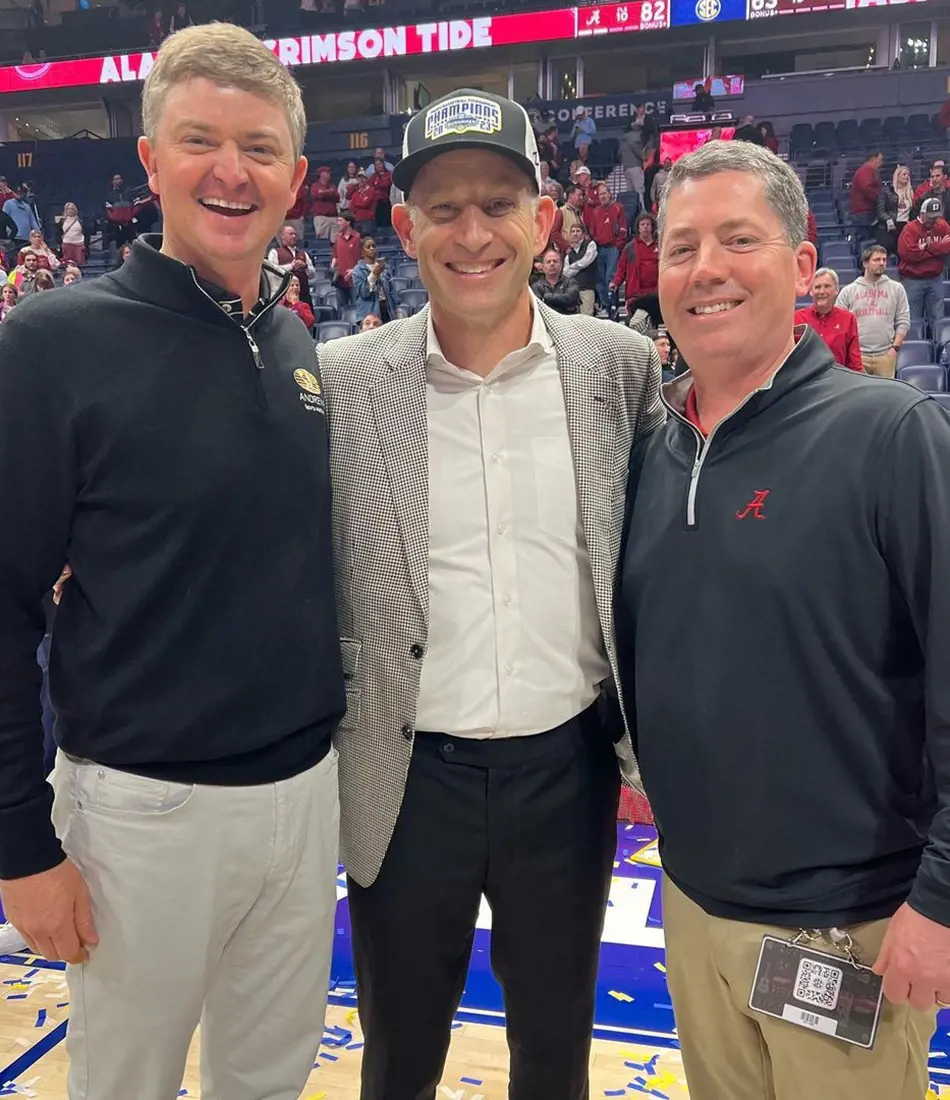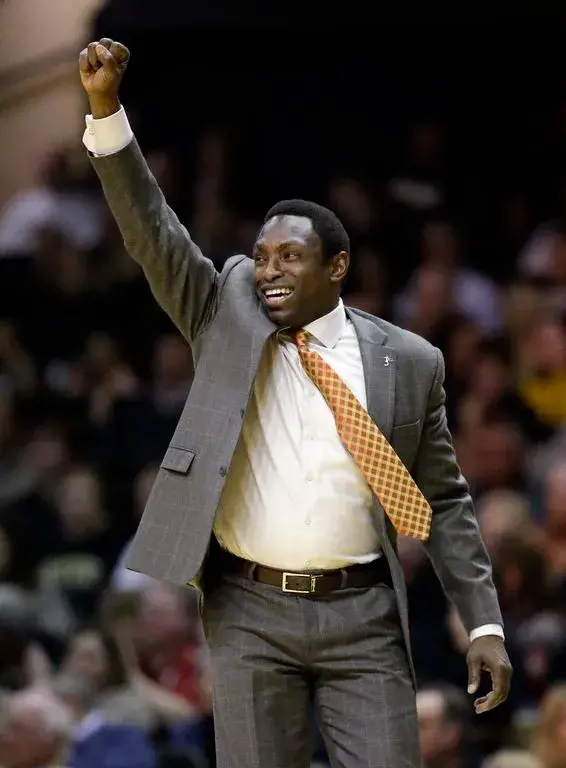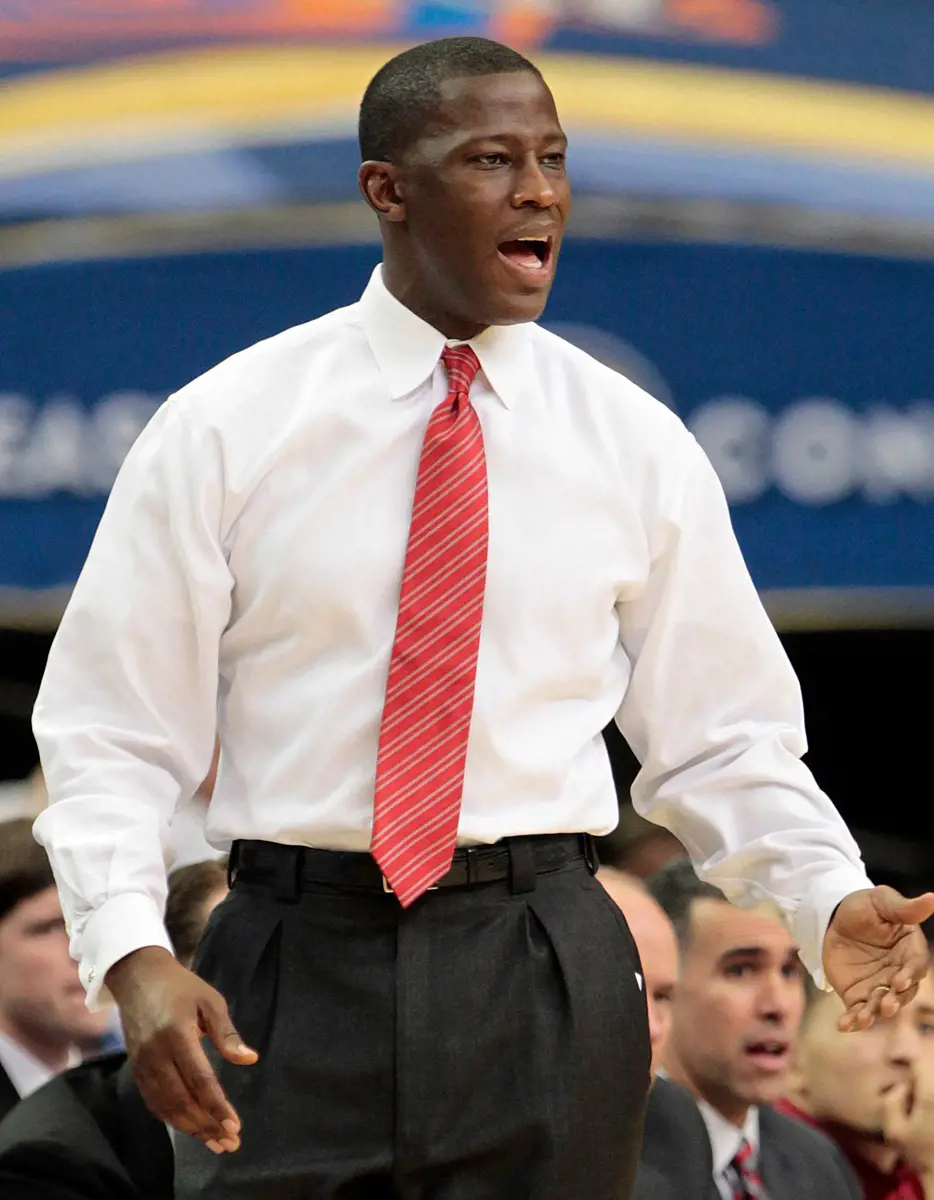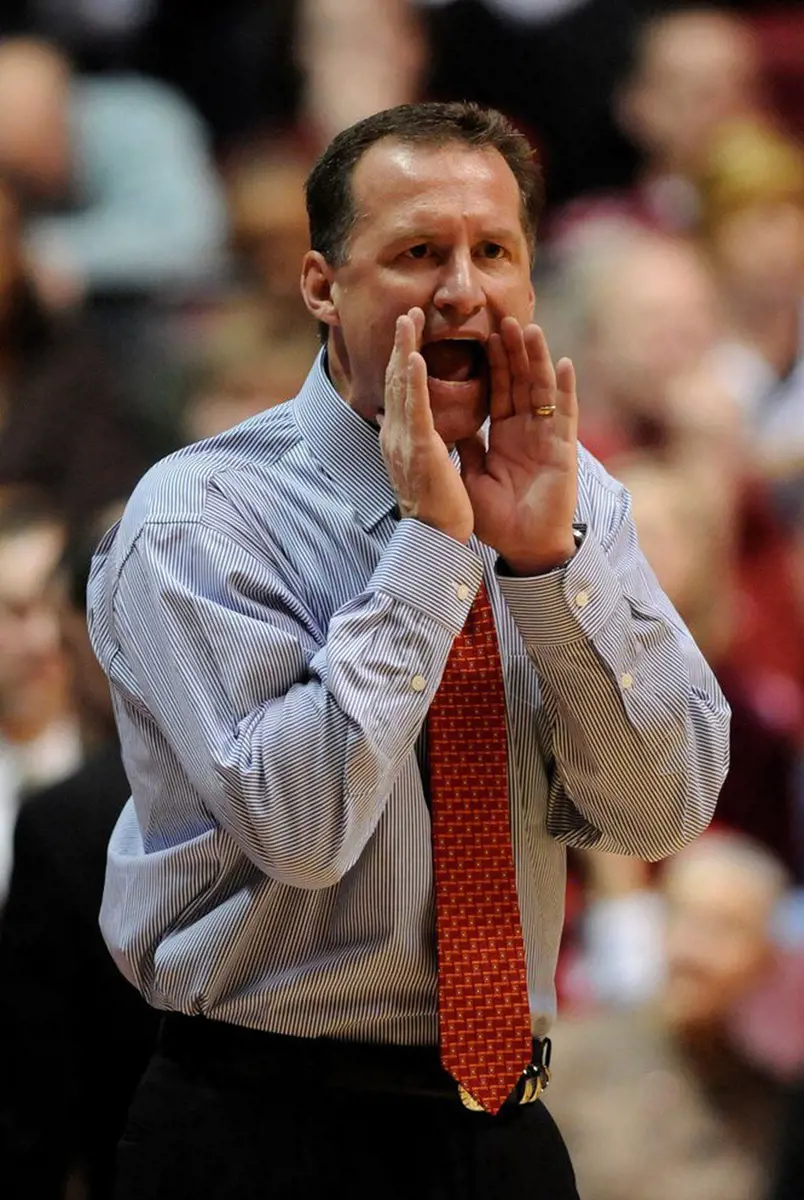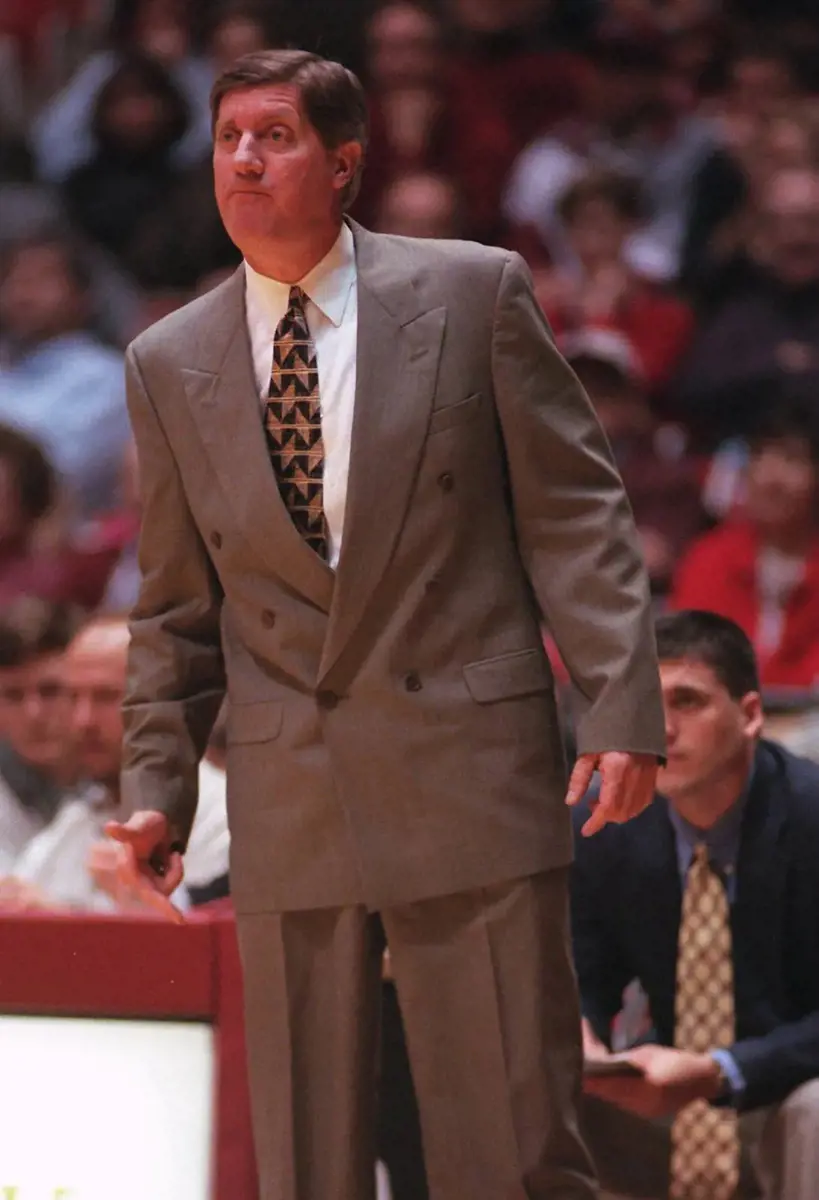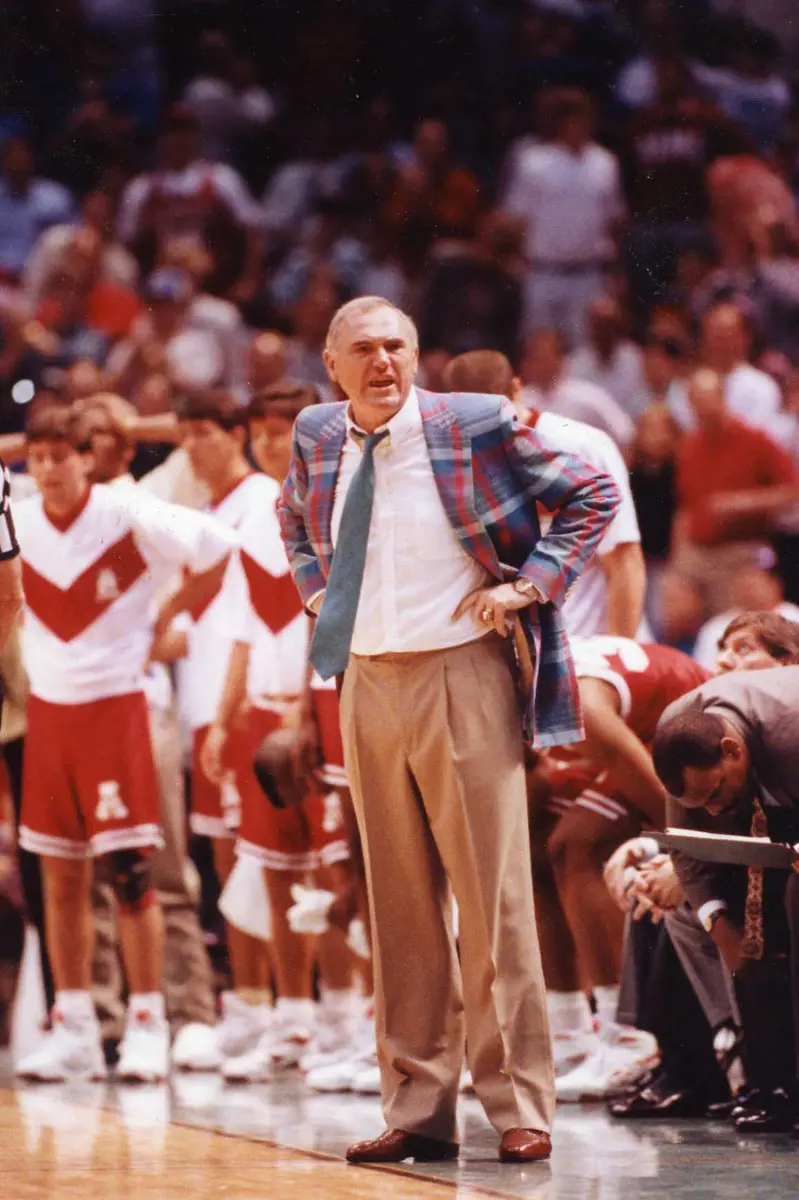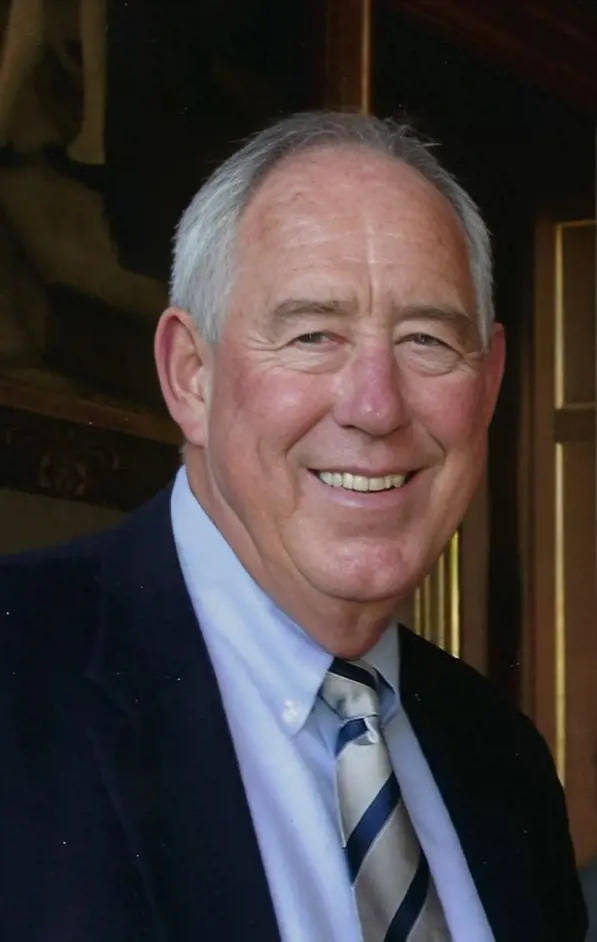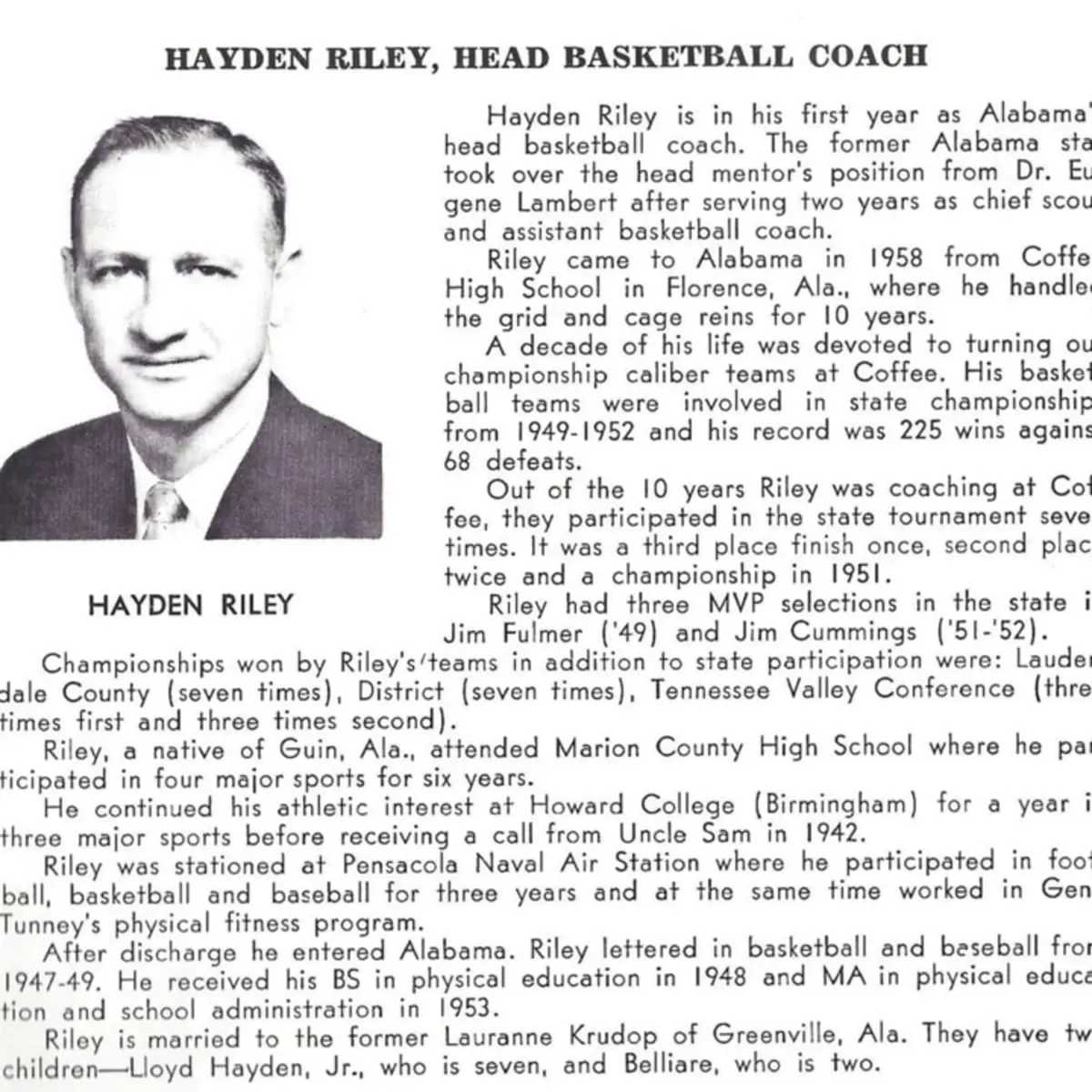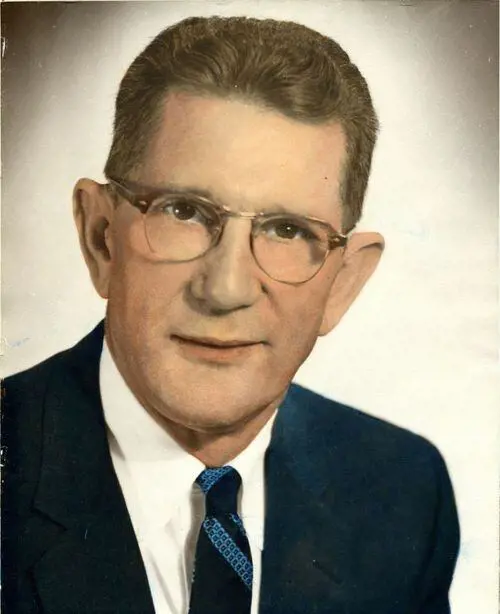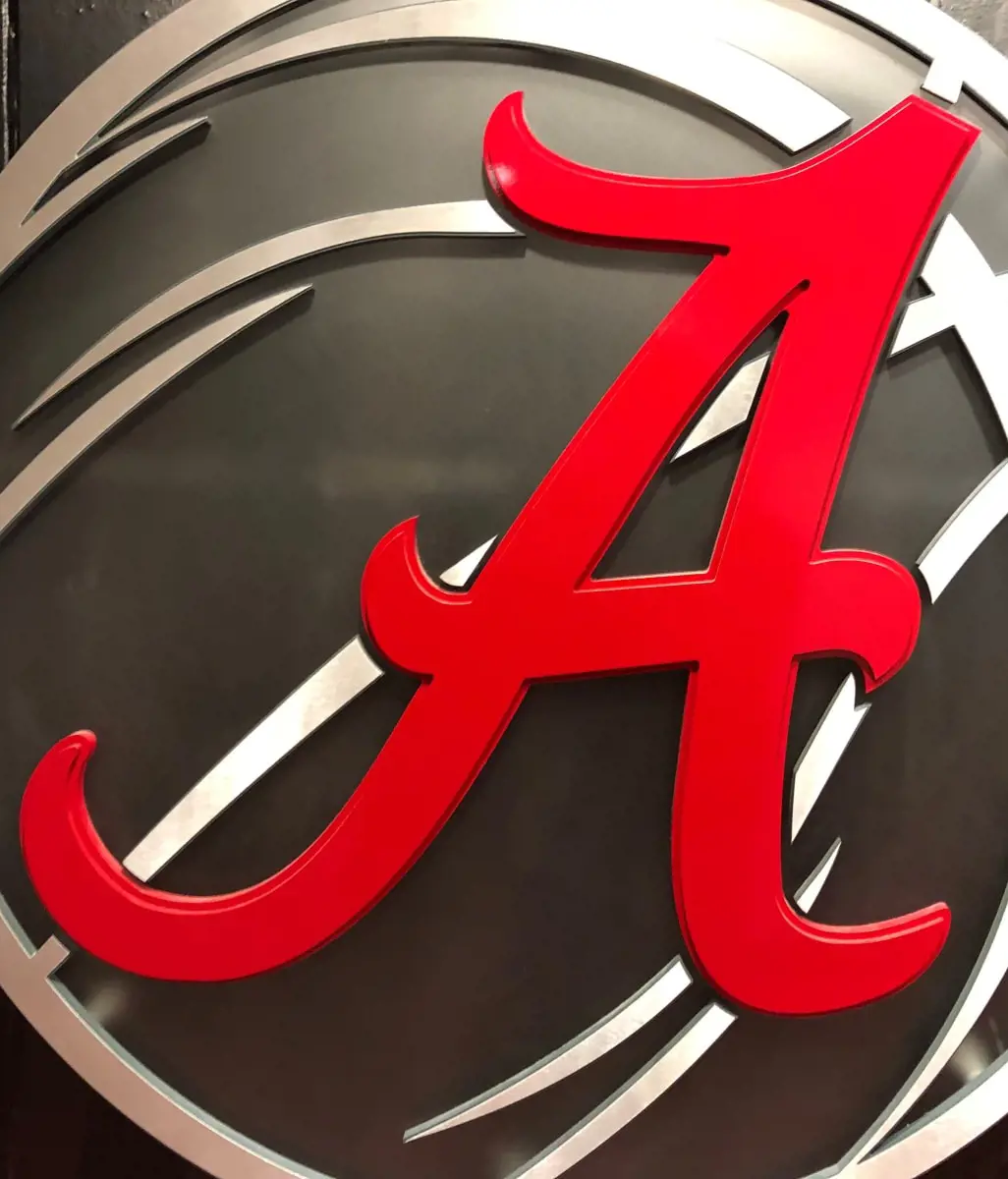1. Nate Oats

- Tenure: 2019-present
- Record at UA: 101-47 (.682)
- 2x SEC tournament (2021, 2023)
- 2x SEC Regular Season (2021, 2023)
- 3 NCAA Tournament Appearances (2021-2023)
On March 27, 2019, Greg Byrne, the athletic director, appointed Oats as the head coach of the Alabama Crimson Tide.
His performance up to 2021 has been considered successful, with back-to-back qualifications for the NCAA Tournament.
At the end of the 2020-21 regular season, during his second season as head coach, Oats received the SEC Coach of the Year award. Additionally, the Tide secured both the SEC regular-season and tournament championships.
Before taking on the role in Alabama, he served as the head coach at the University at Buffalo.


